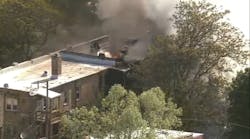Let’s start off with a question: How many “things” do firefighters have to know how to do? If you pose this question to non-fire people, my guess is their answer may be in the double- or possibly triple-digit range. But if you pose this same question to fire service personnel, the answer will be in the high four-digit range. And regardless of what the task is, the firefighter is asked to get the task done right.
In any given shift, a given firefighter in a given department may be asked to do several tasks—apparatus inspection, backing, hydrant operations, report writing, maintenance of personal protective equipment (PPE) and other equipment, training, building inspections and many others.
What do the chief and the officers need to do to help ensure that these tasks get done right? An easy way to look at this is to study prior events in the fire service that didn’t go as planned, and look for the cause. How did we get sued on this? What caused the firefighter to get criminally indicted after this collision? How did that firefighter get hurt? Why are we being negatively portrayed in the media this morning?
A single task not done right in a fire department can generate multiple consequences. Although there are many proximate or related causes linked to the negative outcome, risk managers look for the “root cause.” Root causes are fewer in number than the proximate causes, but they are important to recognize so that the proactive chief can address a potential problem lying in wait and in doing so prevent a future tragedy.
The root causes for almost all tragedies in the fire service come down to:
- People
- Policy
- Training
- Supervision
- Discipline
If you want things done right, you need good people, well-designed and up-to-date policy, ongoing and relevant training, fire officers who provide the supervision that enforces policy, and a viable discipline system in place to address personnel who do not follow policy.
Each and all of these need your attention in advance to prevent problems from occurring, but in this article, we’ll focus on the policy component of these five root causational factors.
Policy or procedure?
Now, some people use other terms for policy, so let’s pose another question: Which came first, the policy or the procedure? It may sound like an odd question, but it’s one worth considering when it comes to the policies that govern nearly every aspect of your fire department.
To answer the question, we need to understand the difference between these terms. A policy is a guiding principle used to set direction in an organization. A procedure is a series of steps to be followed as an approach to accomplish an end result—often, what the policy dictates should happen.
So which comes first? In actuality, the answer may differ based on the topic. The ideal approach is to begin with a clearly defined, well-constructed policy, and write procedure from there. In reality, however, many fire department policies are based at least in part on a current procedure. In fact, writing policy can be an excellent time to review procedure and identify needed changes.
And let’s face it, writing policies, or reviewing them, is certainly not the exciting and glamorous part of the fire service. Not one of your firefighters or officers would tell you they joined the department because they wanted to wade through legal language and decipher complicated statutes and regulations. Fundamentally, however, policies are an essential foundation to any fire department.
Unfortunately, policies can also be one of the most neglected areas in a department. Sure, you probably have policies, but does your department (and especially your company officers) actually operate based on those policies? Odds are, they don’t.
Think about the exposure your average firefighter has to department policy. A recruit gets hired on at a department and begins their probationary process. Although they are probably introduced to the policy manual at some point, they are also subjected to a multitude of academic, skills and physical training that tends to overshadow exposure to or testing on organizational policies. Once their probation is completed, the individual begins the formal education process as well as state/federal-mandated training in specific skills such as hazardous materials, EMS, technical rescue, wildland, USAR, etc. In most departments, firefighters have relatively little if any organizational policy training as they move forward in their careers; even those testing for company officer positions may only receive rudimentary questions on policy.
This means that those who are eventually in charge of maintaining and developing the department’s policies often have little exposure to what makes a good policy. Fortunately, if you’ve found yourself or one of your officers in that situation, there are a few fundamentals with which you can start.
Have you reviewed and updated your policies this year?
Many departments have not updated their policies in 10 or 20 years. But even one year of not updating may place your department at risk. State and federal policies change frequently, and new laws come on the books all the time. Do you know whether you’re up to date with these changes? The last thing you want is for a negative situation to occur and your policies are out of date—or your employees can honestly claim that they weren’t even aware they existed.
For example, women have been in the fire service for decades, and their numbers continue to increase, further helping the fire service grow. Unfortunately, many departments have failed to update their policies to ensure that both men and women are treated fairly. For example, recently an Arizona department was sued for providing inadequate space for a firefighter to express breast milk. Federal and many state laws specify that not only must employers provide lactation breaks, but the space provided for such breaks must be private and cannot be a bathroom or a toilet stall. Does your department have a policy that covers this topic? More importantly, would you be able to meet the policy?
Are your policies legally defensible?
Who wrote your policies and how long ago? Are your policies consistent with those of other departments similar to yours? Who has reviewed your policies or helped you develop them to ensure they are legally defensible? With local, state and federal mutual aid now a common practice, are you able to effectively respond to incidents and safely and adequately provide and receive assistance? A good policy is much more than a regurgitation of the law. It incorporates industry best practice, which is an ever-evolving concept. If your policies show you to be out of touch with the rest of the industry, it can make your department vulnerable to legal challenge.
Also, policies need to be clearly worded, consistent and easily understood. What the person who wrote the policy intended to say isn’t what counts, nor is it OK for a policy to be confusing or exhibit inconsistencies even if everyone in the department “knows what it means.” It must be understandable to an outsider and able to withstand the scrutiny of those taking the words at face value.
Are your policies consistent with your procedures?
The best-written policy is meaningless if a lawyer can easily prove that your department’s procedures (the way that your department truly operates day to day) don’t match your policy. Remember, policies set the end goal or direction; procedures tell you how to get there. The two must go hand in hand. Unfortunately, however, policies are often left to gather dust as procedures evolve in response to things like natural and manmade disasters, terrorism, climate change, civil unrest and communicable diseases. Even our day-to-day fire and EMS response changes rapidly with new technologies, apparatus and equipment. Your policies must evolve as well. Ask yourself a simple question: Do your policies and procedures describe how your department operates every day?
Are your policies reinforced through training?
The final key to effective policies is actually using them, which in turn helps ensure that your policies and procedures stay consistent and those that need updating or revising are identified and addressed. Regular training on your policies reduces your department’s liability risk; more importantly, it makes your personnel safer. And don’t fall back on training that’s nothing more than an annual request to “sign here to indicate that you reviewed the policy manual.” Instead, use frequent scenario-based training, including hands-on training as well as kitchen table conversations and online tools, to bring policies to life and help firefighters apply policy to real-world examples.
Facing reality
Too often, fire chiefs and officers do not ask themselves the above questions, and instead we leave the policies behind over the years. Before long, we’re “out of compliance” in the legal definition. Then, something happens, and we scramble to find the documentation we need, only to find we have none.
Every day across the country, in any newspaper, fire publication or TV news show, we hear about communities where people are hurt or killed, property is damaged or lost, patient care is compromised. The lawsuits arising from these incidents exceed millions of dollars, often due to insufficient and/or outdated organizational policy. And policies that are out of date, not legally defensible or inconsistent with procedure not only lead to lawsuits. They can also contribute to line-of-duty deaths and injuries, severely diminish our level of service, and threaten our individual and organizational reputations.
As firefighters and fire officers, you, me—we—are all at risk. You place yourself, your organization and your city at high risk by not having policies in place and ensuring you and the members in your organization have received, read and understand them.
Long gone are the days when “the city (district, township, etc.) will take care of it.” Personal liability is now on the shoulders of all of us, which means we can be held personally responsible. Having sound, effective, defensible policies—and using them as the roadmap to help lead your department—is key to shouldering that responsibility.
In future writings we will address the other components necessary to better ensure things get done right. Until then, thanks for all you are doing and please take the time to work safely so that “everyone goes home.”






